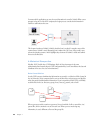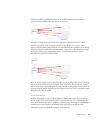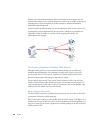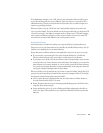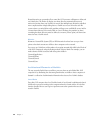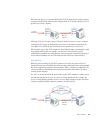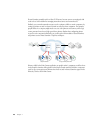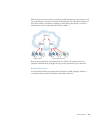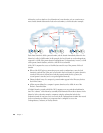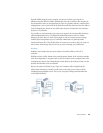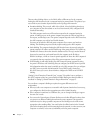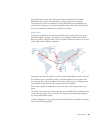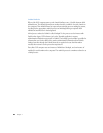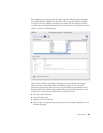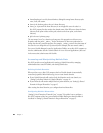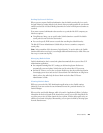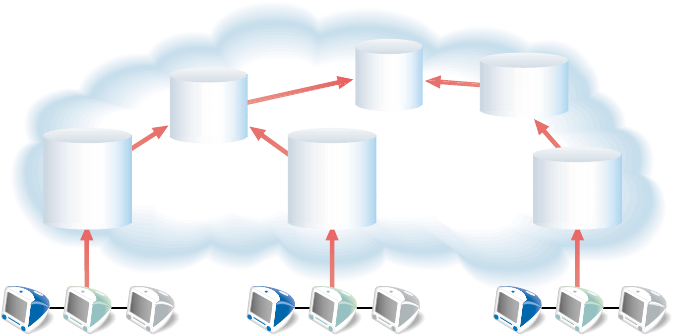
18
Chapter 1
A hierarchy can be as simple as a local domain and a root domain, or it can contain one or
more shared domains between the local and root domains, as in this education example.
Each shared domain is called a
parent
domain, and the domain immediately below it in the
hierarchy is called a
child
domain. In this example, the local domain on each undergraduate
computer is a child of the parent domain Undergraduates. Undergraduates, in turn, is a child
of the parent domain Students, which is a child of the root domain.
A Mac OS X computer has access to NetInfo data stored in any of the parents of its local
domain:
m
When a Mac OS X login or connection process needs to authenticate a user, the local
domain is searched first. If the user is not found in the local domain, its parent domain is
searched. If the user is still not found and the parent domain also has a parent, the
second parent is searched, and so on up through the hierarchy.
m
Printers defined in any of a computer’s parent domains appear in the Directory Services
list in Print Center.
m
All the mounts defined in a computer’s parent domains can be visible in one of the
Finder’s /Network folders.
A NetInfo hierarchy controls which Mac OS X computers can see particular administrative
data. The “subtrees” of the hierarchy essentially hide information from other subtrees in the
hierarchy. In the education example, computers using the subtree that includes the
Graduates domain do not have access to records in the Undergraduates domain. But records
in the root domain are visible to any computer that is configured to access the
Undergraduates, Graduates, or Faculty domain.
Under-
graduates
domain
Graduates
domain
Faculty
domain
Employees
domain
Students
domain
/
domain



